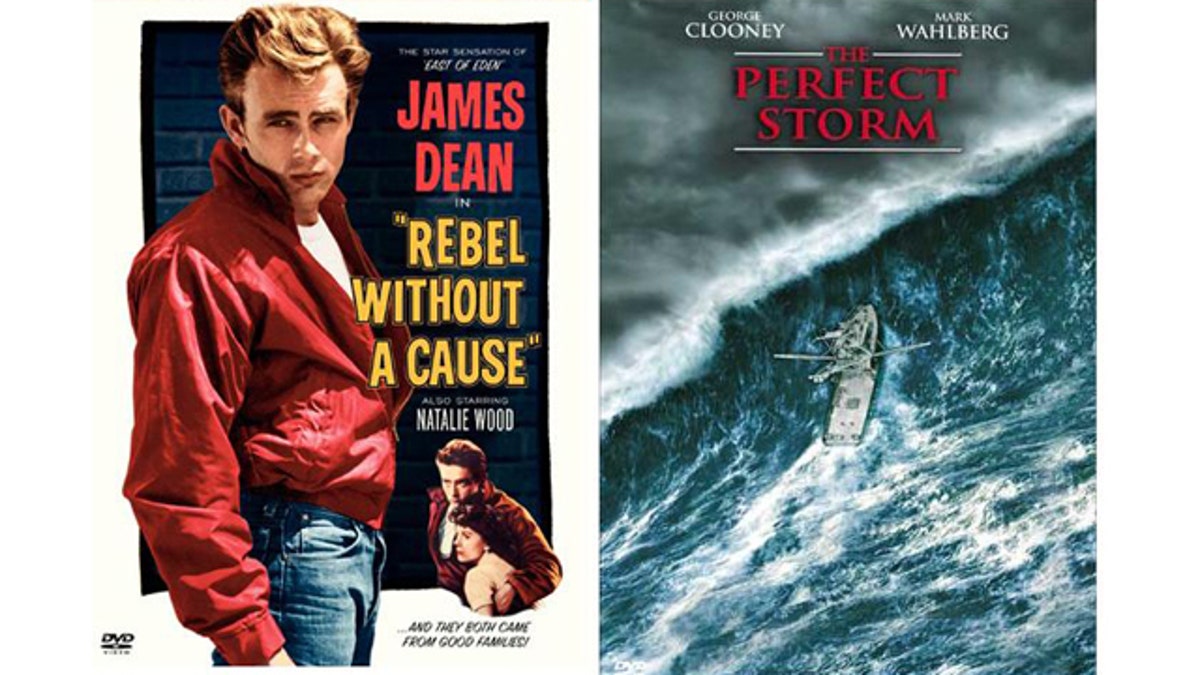
What do these two films have in common? They both have almost perfect 1/f ratios, which may explain why we find them so engaging.
Now we know why we fall asleep at the movies. It's the math.
A cognitive psychologist from Cornell University studied over 150 films from the past 70 years, shot by shot, to find out just what makes one a snoozer and another an edge-of-the seat thriller.
And the answer, says Dr. James Cutting, is neither Brad Pitt nor Halle Berry.
It's chaos theory.
"Sometimes I'll be watching a film, get halfway through it, and ask myself, 'Why am I watching this?' But I'm riveted to the screen, I can't tear my eyes away. It's because it's giving you the movie at a certain pace, and you find it very engaging."
Cutting studies film, art and culture, not to mention the perception of motion and depth and the functional analyses of perceptual stimuli. He used the tools of modern perception research to deconstruct the pacing of 70 years of film.
He speculated that, like the golden ratio Renaissance painters and architects praised so highly, there may be a mathematics underlying filmmaking -- if not a formula for aesthetics, at least something that determines how much attention people pay to films.
And Cutting has found it in something called the 1/f pattern.
The 1/f fluctuation is a concept from chaos theory, a rhythm that appears throughout nature -- in music, economics and elsewhere. The ratio is a constant in the universe, and it pretty well describes our attention patterns. To apply it to films, Cutting compared shot lengths throughout the duration of a film against the average shot length within the film -- in other words, the pace.
Working with students Jordan DeLong and Christine Nothelfer, he found that that modern films -- those made after 1980 -- were much more likely than earlier films to approach the universal 1/f ratio, and therefore grab our attention. That is, the sequences of shots selected by director, cinematographer and film editor have gradually merged over the years with the natural pattern of human attention.
"The pattern of shots in movies is getting closer and closer to what we generate endogenously -- you know, in our heads," Cutting explained.
In a study published in Psychological Science, Cutting, DeLong, and Nothelfer found individual films from every genre that have almost perfect 1/f rhythms. "The Perfect Storm," released in 2000, is one of them, as is "Rebel Without a Cause," though it was made in 1955. So, too, is "The 39 Steps," Alfred Hitchcock's masterpiece from way back in 1935.
But modern films' proximity to this ratio doesn't mean you're going to like them more.
"Given our results, one might assume that viewers like better those films with a shot structure closer to a 1/f pattern," the article notes. But that's not the case: There's exactly zero connection between 1/f and film rating on the popular Web site IMDB.
Besides, the study has nothing to do with taste, says Cutting, who personally favors film noirs from the '50s. "In doing this project, I fell in love again with film noir. And what's interesting about them is that their shots are completely random in length. They're as far from 1/f as you can get."
It's no secret that the average shot length in films has declined uniformly from 1960 to the present -- from between 8 to 10 seconds in the 60s to 3 to 4 seconds in 2005. Cutting measured "Quantum of Solace" at just 1.7 seconds, indicative of the quick pace of many contemporary films.
Modern films are closer to the 1/f pattern, but that isn't because of the faster pace of modern films, Cutting explained.
"Every film has an average shot length," he explained. "But the pattern of variation in shot length is independent of the mean." In other words, the variability -- which 1/f is measuring -- can be the same across films regardless of the film's average shot length.
Cutting believes the study may evidence what films of the future will look like, as well.
"Film editors and directors have incrementally increased their control over the visual momentum of their narratives, making the relations among shot lengths more coherent over a 70-year span," he writes. "We suggest that over the next 50 years or so, and with action films likely leading the way, Hollywood film will evolve toward a shot structure that more generally matches the 1/f patterns found elsewhere in physics, biology, culture, and the mind."








































